Unraveling the Mysteries of PCIe Backward Compatibility
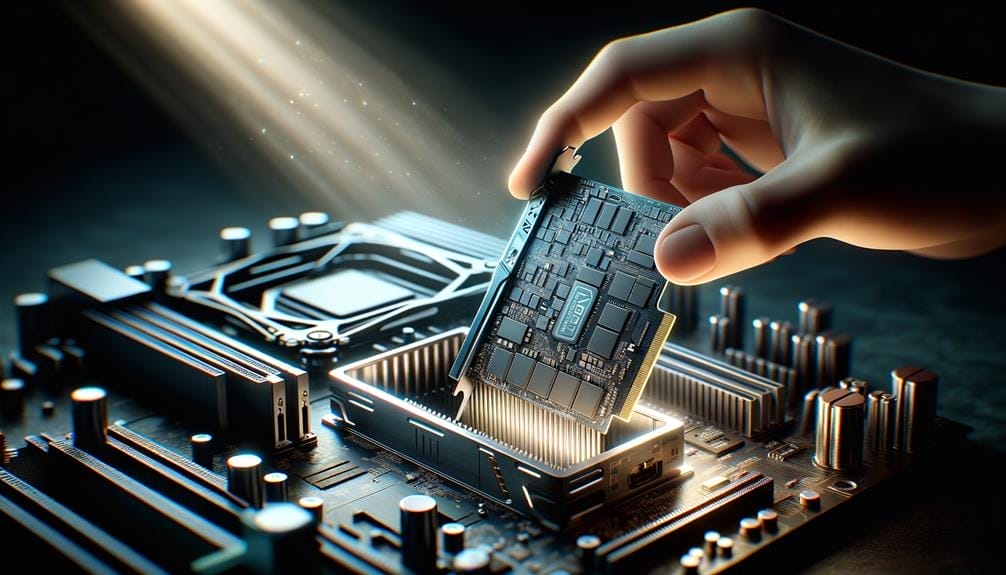
As technological advancements continue at a rapid pace, understanding the nuances of **PCI Express (PCIe) backward compatibility** is becoming more crucial for those looking to improve the performance of their gadgets.
The interplay between newer PCIe devices and older motherboards presents a puzzle that demands careful consideration. Understanding how these components interact, the potential bottlenecks that may arise, and the impact on overall system performance is essential for making informed decisions when upgrading PC expansion components.
This exploration aims to shed light on the intricacies of PCIe backward compatibility, offering insights that will help readers navigate the challenges and make the most of their expansion endeavors.
Key Takeaways
- PCI Express is the leading standard for PC expansion card upgrades, providing minimal-latency, high-throughput connectivity.
- Newer PCI Express devices can work on older motherboards with physical compatibility, but factors like PCIe bandwidth and generation may impact performance.
- Using a PCI Express x8 GPU on PCI Express Gen 3 or Gen 2 boards may compromise performance, while high-end GPUs may require full PCI Express x16 bandwidth.
- PCI Express is not backward compatible with the original PCI standard, and applying a current-gen NVMe drive to a past-gen slot may result in bottlenecking.
Understanding PCI Express Generations
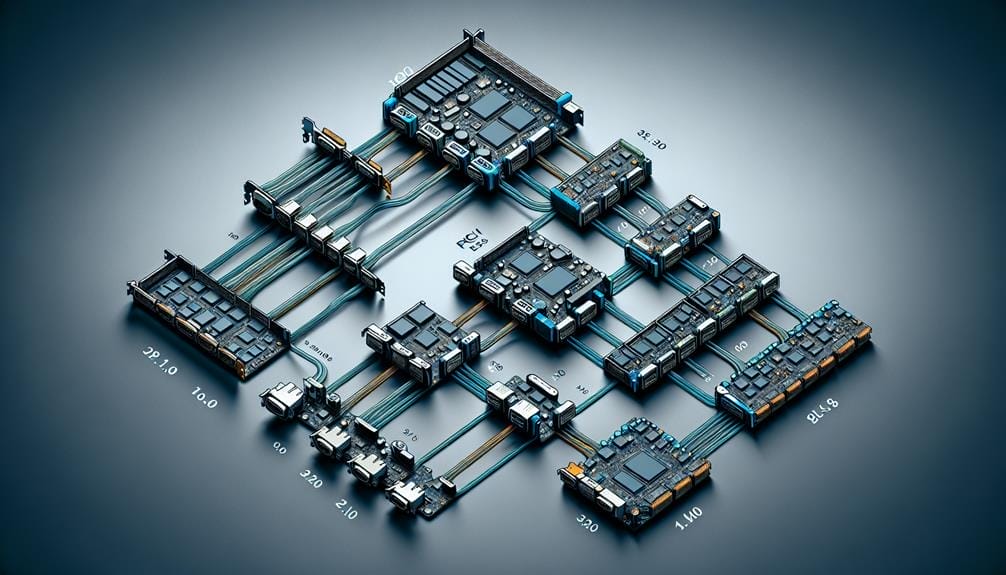
PCI Express, with its various generations, plays a crucial role in determining the compatibility and performance of expansion cards and devices in modern computer systems. The evolution of PCI Express has brought significant advancements in data transfer speeds and bandwidth.
The increased speed of each generation, such as the transition from PCIe 3.0 to PCIe 4.0, has a direct impact on the performance of expansion cards and devices. The higher bandwidth and improved encoding techniques result in enhanced data transfer rates, reducing latency and improving overall system performance.
However, it's important to note that the backward compatibility of PCI Express devices across different generations is also influenced by factors such as PCIe speed and the specific requirements of the expansion cards, affecting their optimal performance within a given system configuration.
Compatibility of Newer Devices on Older Motherboards
The evolution of PCI Express, marked by its various generations and their impact on data transfer speeds and bandwidth, directly influences the compatibility and performance of newer expansion cards and devices when utilized with older motherboards. When considering compatibility of newer devices on older motherboards, several issues may arise, including the impact of outdated drivers and troubleshooting common compatibility issues. Below is a table outlining some common compatibility issues and their impact on performance.
| Compatibility Issue | Impact | Troubleshooting |
|---|---|---|
| Outdated motherboard firmware | Reduced performance and functionality | Update motherboard firmware to the latest version |
| Inadequate power supply | System instability and potential hardware damage | Upgrade to a sufficient power supply |
| Limited PCIe bandwidth | Reduced data transfer speeds and performance | Use devices that match the motherboard's capabilities |
Taking these factors into account is crucial to ensure optimal performance when utilizing newer devices on older motherboards.
Potential Performance Bottlenecks
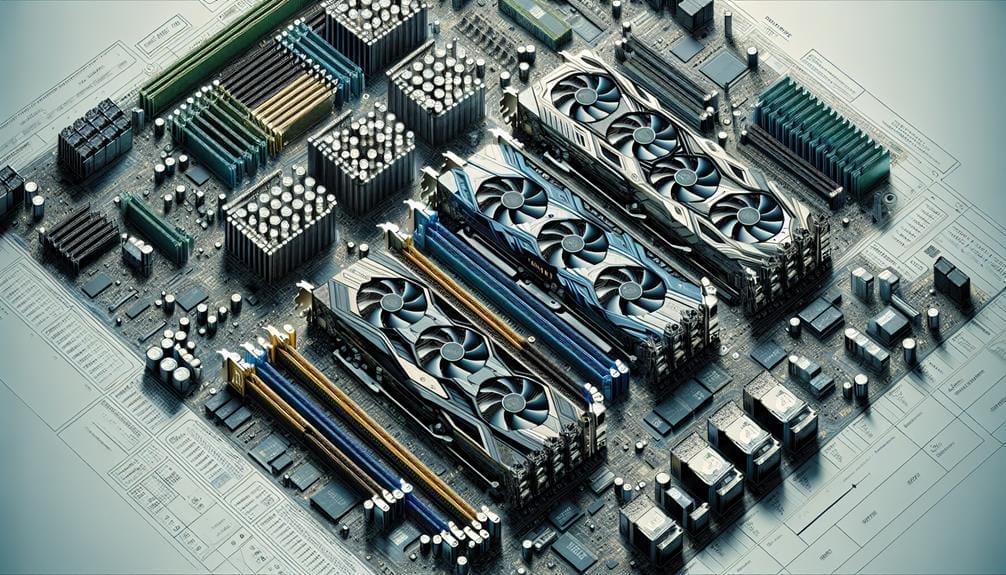
When assessing potential performance bottlenecks in PCI Express systems, it is essential to consider the impact of hardware configurations on data transfer speeds and overall system functionality. The following factors play a crucial role in understanding and optimizing PCIe performance:
- Impact of PCIe lane limitations: The number of lanes available on the motherboard directly affects the data transfer rate. Using high-end GPUs or multiple NVMe SSDs without sufficient PCIe lanes can lead to performance bottlenecks.
- Optimizing PCIe performance: Understanding the requirements of different devices and ensuring that the motherboard provides adequate PCIe lanes can optimize performance. Upgrading to newer generations of PCIe and using higher-tier CPUs with more PCIe lanes can also enhance system functionality.
- Consideration of bandwidth requirements: High-end GPUs and NVMe SSDs may demand full PCIe x16 bandwidth. Insufficient bandwidth due to older PCIe generations or limited lanes can hinder performance.
Backward Compatibility With PCI and NVMe SSDs
Understanding the compatibility of PCI Express (PCIe) with previous generation PCI and NVMe SSDs is essential for optimizing system functionality and data transfer speeds. When considering backward compatibility, it's important to note that PCIe is not backward compatible with the original PCI standard. While PCIe is the successor to PCI, the connectors are substantially different, and older full card-based PCI Express SSDs may not be compatible with older motherboard standards. Additionally, NVMe drives are limited to PCI Express x4 bandwidth, the slowest version on a motherboard, and applying a current-gen NVMe drive to a past-gen slot may result in bottlenecking. To provide a deeper understanding, the following table compares the performance advantages of NVMe SSDs over traditional SATA drives:
| Performance Aspect | NVMe SSDs | SATA SSDs |
|---|---|---|
| Data Transfer Speed | High | Moderate |
| Input/Output Operations | Significantly | Relatively |
| Latency | Low | Moderate |
| Power Consumption | Efficient | Higher |
| Form Factor | Compact | Larger |
Impact of PCIe Bandwidth and Generation
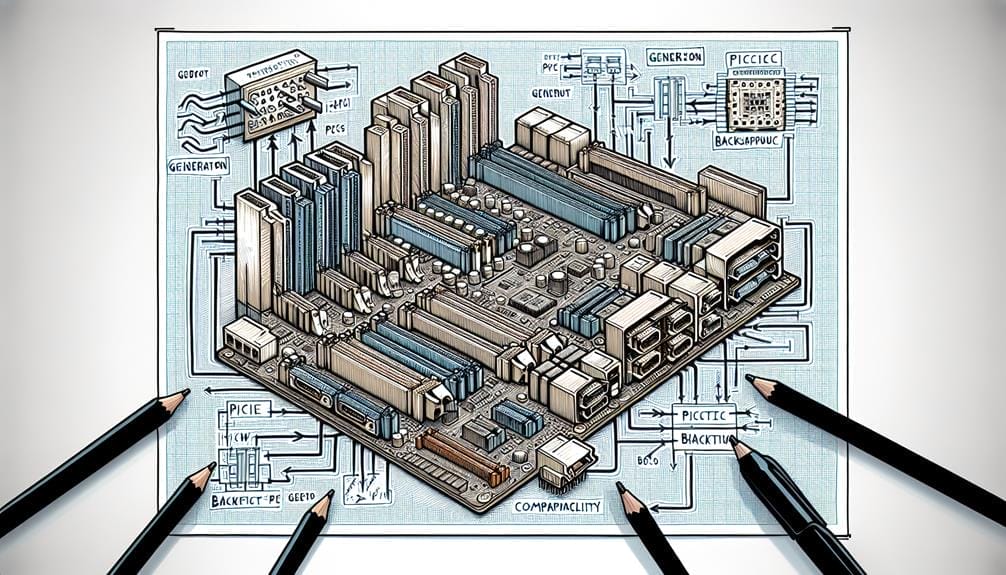
How does PCIe bandwidth and generation impact the performance of expansion cards and connected devices?
The impact of PCIe bandwidth and generation is significant in determining the overall performance of expansion cards and connected devices. Here are a few key factors to consider:
- Effect of PCIe lane count on performance: The number of lanes directly affects the data transfer rate and bandwidth available for each device. More lanes typically result in higher performance and throughput.
- Impact of PCIe bandwidth on gaming performance: In gaming, higher PCIe bandwidth allows for faster data transmission between the GPU and the CPU, resulting in smoother gameplay, reduced latency, and improved overall gaming performance.
- Compatibility with newer technologies: Newer PCIe generations often support higher bandwidth and improved performance, making them more suitable for demanding applications and newer devices.
Understanding these factors is crucial for optimizing the performance of expansion cards and connected devices in a PCIe environment.
Limitations of Multiple GPUs and NVMe SSDs
Discussing the limitations of multiple GPUs and NVMe SSDs entails analyzing the impact of PCIe bandwidth allocation and connectivity constraints on system performance and data transfer rates.
Bandwidth limitations can significantly impact gaming performance, especially when running multiple GPUs or using multiple NVMe SSDs. High-end GPUs may require full PCI Express x16 bandwidth, and using a PCI Express x8 GPU on PCI Express Gen 3 or Gen 2 boards may compromise performance.
Additionally, running multiple GPUs or populated PCIe slots may depend on the motherboard's available lanes, which can affect data transfer rates and overall system performance. Similarly, multiple NVMe SSDs can limit PCIe lanes in certain slots, potentially impacting data transfer rates and storage performance.
Therefore, understanding these limitations is crucial for optimizing system performance, especially in gaming and high-data-transfer scenarios.
Differences Between PCI and PCI Express
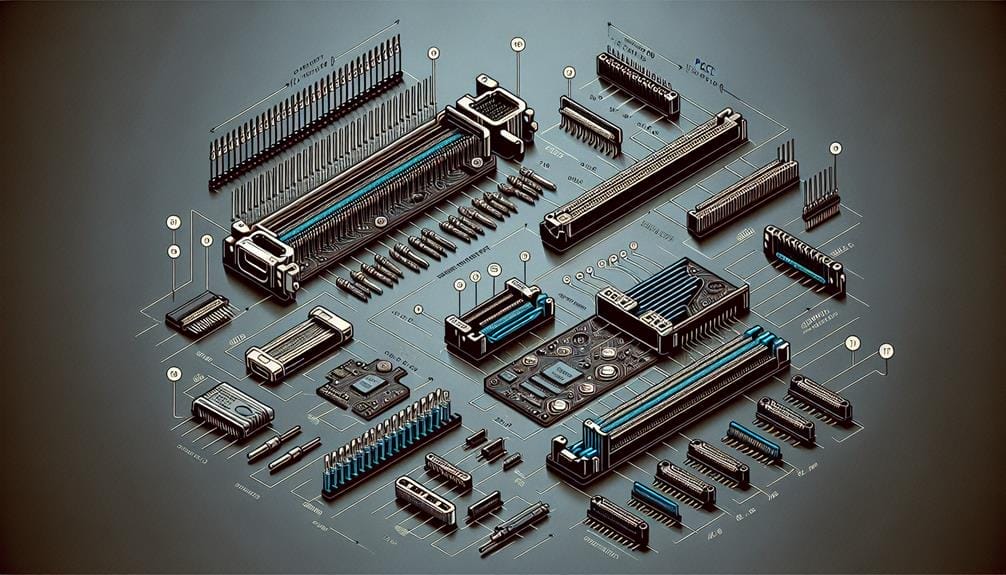
The impact of PCIe bandwidth allocation and connectivity constraints on system performance and data transfer rates leads to a critical examination of the differences between PCI and PCI Express.
Differences Between PCI and PCI Express
- PCI Express Connectors
- PCI uses a parallel bus architecture, while PCIe utilizes high-speed serial point-to-point connections.
- PCIe connectors are smaller and faster than traditional PCI connectors, allowing for more efficient data transfer.
- Advantages of PCI Express
- PCI Express offers higher data transfer rates and increased bandwidth compared to PCI.
- PCIe supports hot-swapping, allowing devices to be added or removed without shutting down the system.
- The point-to-point connection of PCIe reduces the likelihood of bus contention, enhancing overall system performance.
- Compatibility
- PCI Express is not backward compatible with PCI due to substantial differences in connectors and architecture.
- The advantages of PCI Express, including faster speeds and improved connectivity, make it the preferred choice for modern expansion card upgrades.
Additional Resources and Support
For further assistance and in-depth discussions on PCI Express backward compatibility and related topics, CGDirector's forums provide a valuable platform for community engagement and detailed project planning.
As a reader-supported platform, CGDirector earns affiliate commissions through the provided links, which supports the continuous creation of informative content.
Visitors can explore various articles covering topics such as checking PCIe slot versions, understanding PCIe bifurcation, and optimizing PCIe performance.
The comments section allows for feedback, insights, opinions, and discussion from the expert community.
In addition to the forums, visitors can also find contact information for direct communication, inquiries, and support.
Legal information ensures transparency and compliance, and the support and media sections explain job opportunities, user support, media outreach, and the purpose of ads in supporting CGDirector's growth.
Conclusion
In conclusion, understanding the intricacies of PCI Express (PCIe) backward compatibility is crucial for maximizing system performance and functionality.
By delving into the nuances of compatibility, potential bottlenecks, and the impact of PCIe bandwidth and generation, readers can gain insights into optimizing PCIe performance and addressing limitations.
This comprehensive exploration equips individuals with the knowledge needed to navigate the complexities of PCIe backward compatibility and make informed decisions when upgrading their systems.

